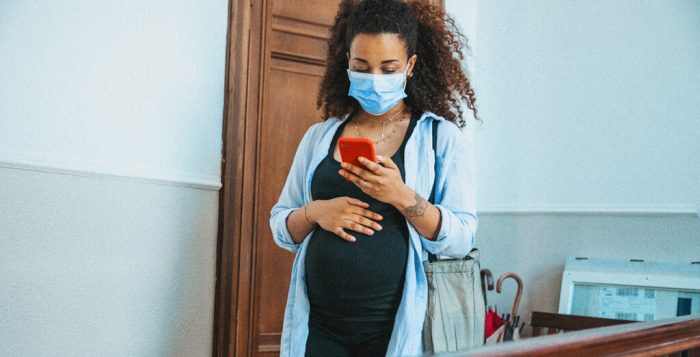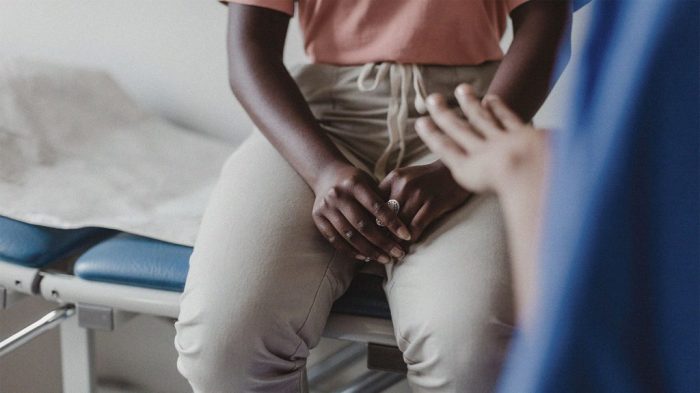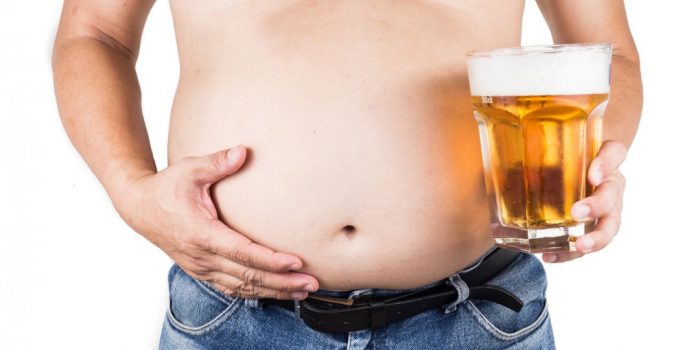According to existing data, at least one in every 10 women live with endometriosis. Although this condition can have a serious impact on the quality of life, it often takes women years to have it diagnosed. Medical News Today speak to women living with this condition to find out more about their long journey to a diagnosis.
This issue can affect all people assigned as female at birth, but it often goes undiagnosed, partly due to gender stereotyping.
Available data indicate that around 10–15%Trusted Source of all women live with endometriosis, a chronic condition in which tissue similar to uterine lining grows outside the uterus.
The severe pain and bleeding and other incapacitating symptoms that often accompany endometriosis mean that the life quality of those who live with this condition is impacted in serious ways.
Despite this, it can take anywhere between 4 and 11 years for women to receive the correct diagnosis, and as many as six out of every 10 cases of endometriosis may remain undiagnosed.
Medical News Today have spoken to three women with diagnosed endometriosis to find out more about their experience of obtaining a diagnosis: what made it difficult, whether the treatment they received was helpful, and how this chronic condition has been affecting their lives.*
For an informed perspective on the difficulties that accompany the task of raising awareness of the facts versus myths about endometriosis, we have also spoken to Jenneh Rishe, a registered nurse and founder of the nonprofit organization The Endometriosis Coalition.
Why does it take so long to diagnose?
The most recognizable symptomTrusted Source that accompanies endometriosis is debilitating pain, not just in the pelvic area but also of the lower back, during bowel movements and during or after sexual intercourse with vaginal penetration.
While the pain often occurs during menstruation, it can also occur between periods due to the lesions and scarringTrusted Source caused by endometriosis.
Alma, one of the women who spoke to MNT about their experience, said that she realized she might have endometriosis when “[t]he pain had moved from just my ovaries to my intestines and overall stomach area.”
“[A]fter many MRIs and ultrasound scans, they concluded that I must have endometriosis, based on symptoms alone,” she added.
“Some common misconceptions [about this chronic condition] are that endometriosis is just a bad period, when, in reality, it is a highly inflammatory, full-body disease,” Rishe told MNT.
“To date, endometriosis has been found in every single organ in the body. The symptoms range from abdominal pain to brain fog and fatigue, to chest pain and shortness of breath, to nerve pain and pain with urinating. The symptoms are all over the map, and they don’t only happen during someone’s period. They can be every single day,” she explained.
Because endometriosis can affect so many parts of the body — including the vagina and rectum, intestines, bladder, and diaphragm — doctors may misdiagnose it as a different chronic condition.
Another woman, Martha, also told us that it was only when she started to experience chronic pain between periods that she realized she might have a gynecologic condition.
“I’ve had painful periods my entire life, but for a long time, I’d never heard of endometriosis. Around my mid-20s, I started to experience pain more often, not just during my period,” she said.
“I just happened to hear about endometriosis online, on social media. At first, I didn’t identify with it, because I’d been told that period pain is normal. But as the severity of my symptoms increased, I started to wonder if maybe this wasn’t so normal. I believe I was 28 years old when the pain and other symptoms started happening daily and just didn’t stop. That was when I started looking into endometriosis more seriously and began to suspect that I had it.” – Martha
Another contributor, Lisa, told us that she had a similar experience: “I realized that I might have endometriosis after receiving abnormal results from a transvaginal ultrasound. I visited my general OB-GYN after experiencing abnormal bleeding and increasingly debilitating pelvic pain during both ovulation and menstruation.”
In her case, too, it took many attempts at a diagnosis until she received the correct one — and only then, it was after specifically seeking the advice of an expert in endometriosis.
“I was told that the shape of my uterus was suggestive of adenomyosis, and while doing some research with the help of […] various online support communities, I learned about the relationshipTrusted Source between adenomyosis and endometriosis. My symptoms aligned with the most common symptoms of endometriosis, so I found an endometriosis excision expert in my area and sought his care.” – Lisa
Currently, the generally accepted way of diagnosing endometriosis with certainty is through a laparoscopic surgery, which allows doctors to see the endometriosis lesions.
‘Everyone assumed it was just a painful period’
The misdiagnoses and wide array of symptoms may contribute to how long it takes healthcare professionals to diagnose this condition.
In Martha’s case, “it was almost 3 years between beginning to pursue a diagnosis and finally getting one.” For Alma and Lisa, it took well over a decade to receive a formal diagnosis.
“I was formally diagnosed with [endometriosis] around the age of 30, despite the fact that I’d had extremely painful periods since the age of 14,” Alma told us.
For her part, Lisa said: “I first sought care for the debilitating nature of my periods when I was around 16, and did not receive my diagnosis until I was 25. It’s hard to say when my symptoms officially started, but looking back, I would guess that I experienced them for well over 10 years before being diagnosed.”
Yet the complexity of endometriosis symptoms is only half of the story when it comes to the delays in diagnosing the condition.
When women seek help for chronic pain associated with or triggered by their periods, they often hear that this experience is “normal,” just a “bad period” that they have to find ways to cope with.
This was Alma’s experience, which she recalled with frustration. Even upon diagnosis, she said:
“I was offered no treatment apart from very strong pills, many of which [have] been discontinued since due to their dangerous side effects. […] Mostly, I was just told to deal with it. Everyone just assumed it was just ‘a painful period.’ Nobody seemed to think it was a condition, nobody regarded it as something that was even worthy of treatment. […] And I have seen a lot of gynecologists in my life, particularly in my teens and early 20s. It was just assumed that it was a ‘normal’ albeit very painful period, despite the fact that I would have pain and vomiting to the point of faint[ing] and [experiencing] visual hallucination[s].”
Alma’s experience ties in with worldwide reports of a gender pain gap — the phenomenon whereby women report more instances of chronic pain than men but are less likelyTrusted Source to be offered timely pain relief by healthcare professionals.
Why should this be so? One review of the existing literature, published in Pain Research and Management in 2018, suggests that the answer may lie in the persistence of gender stereotyping the experience of pain.
Studies about pain and healthcare, the review shows, tended to make questionable value judgments about men versus women and their subjective perception of pain.
“[M]en were presented as being stoic, in control, and avoiding seeking healthcare. Women, on the other hand, were presented as being more sensitive to pain and more willing to show and to report pain, compared [with] men,” the review authors write.
This suggests that women’s experience of chronic pain may get dismissed as exaggerated, a result of subjective, emotional oversensitivity rather than an objective physical experience.
Elusive treatments and management
There are many misconceptions about treatments and causes as well. Rishe told MNT that one misconception is “that pregnancy or hysterectomy are treatments for endometriosis.”
Another “major misconception is that [endometriosis] only affects those [in] their childbearing years, when, in reality, many adolescents and teens show signs of endo,” she noted.
Treatments for the management of endometriosis do exist, although they are far from perfect.
After receiving a diagnosis, women may be offeredTrusted Source an excision surgery, which will remove the abnormal growths of endometrial-like tissue. This excision does not stop the tissue from growing back, however, and repeated surgeries may follow to keep removing these growths.
Doctors may also offer an endometriosis management plan, depending on how much pain and bleeding a person experiences as a result of endometriosis.
In the first instance, doctors may prescribe the same drugs they would advise for the management of menstrual cramps: nonsteroidal anti-inflammatory drugs (NSAIDs)Trusted Source, which are over-the-counter pain relievers, such as ibuprofen.
Other prescribed treatments to manage endometriosis include hormone therapy, such as birth control pills, or the insertion of an intrauterine device (IUD).
None of these options, however, are ideal. NSAIDs often do not reduce the severe pain that endometriosis can cause, and both birth control pills and IUDs can produce side effects that further impact quality of life.
Martha told MNT that the treatments and coping strategies that her physicians offered kept falling short of their aim and did not help with her symptoms.
“When I told doctors I was having a hard time [with endometriosis] and needed treatment, they’d suggest trying a different form of birth control to help reduce cramps or lighten my period, but no birth control ever fully addressed my symptoms,” she recounted.
“Some doctors just suggested things like exercise and ibuprofen (which never even touched my pain). I was at the point where I could hardly even get out of bed some days, and I was just about ready to give up trying, because the ‘treatment’ options offered were so unhelpful.” – Martha
Martha told us that only excision surgery helped, but in the long term, she needed a solid management plan.
“Since [the surgery], treatments have included other forms of birth control, like an IUD and then Depo-Provera, changing my diet, and mindfulness tools like meditation,” she said.
Yet none of the formally offered options and treatments proved to be enough.
Martha felt she had to go beyond the doctor’s office and come up with her own coping strategies: “I’ve never really had options that addressed my symptoms completely, but my most consistently helpful treatments have been home remedies, like heating pads, TENS units, and medical cannabis.”
To go or not to go on ‘the pill’?
Birth control pills may help slow down the growth of endometrial-like tissue outside the uterus. However, they can have many side effects — including bleeding between periods, migraine, decreased libido, and mood changes.
Finding “the right pill” may feel like a gamble with high stakes: it could take months and trying various types of oral contraceptives until a woman lands on the one that causes her the least distress. With endometriosis, matters get even more complicated.
For some, birth control could work wonders. That was the case for Alma, who “was […] told [by doctors to] try the minipill to see if the symptoms [of endometriosis] go away, and if they do, then they can conclude that it was indeed endometriosis.”
“I did take the minipill, and the symptoms went away,” she said. Alma is still taking the “minipill” — a progestin-only birth control drug that may cause fewer side effects than regular combined pills, which contain both progesterone and estrogen.
For her, this strategy is successfully keeping endometriosis symptoms at bay. Lisa, however, did not experience the same relief and worried that birth control might mask symptoms rather than address them.
“I took birth control pills for 7 years and found no relief,” Lisa told us. “I also received minimal relief when using the NuvaRing,” she added.
“I refused IUDs and Nexplanon due to fear of side effects and inability to get the devices removed in a timely manner, if needed, which is something that folks with endometriosis and adenomyosis experience all too frequently. I want to stress that oral contraception and hormonal suppression are not effective treatments for endometriosis and that they often mask symptoms and delay formal diagnosis,” Lisa commented.
Why these differences? A 2018 study published in The Journal of Clinical Endocrinology and Metabolism found that it may all come down to the type of endometrial-like tissue growing outside of the uterus.
The study authors found a link between the progesterone receptor (PR) status of endometriosis lesions and whether or not they responded to progestin therapy.
In short, PR-positive lesions tended to respond to progestin therapy, and PR-negative lesions responded much less. This led the authors to suggest analyzing these lesions upon excision, to find out what kind of hormonal treatment they were most likely to respond to.
Pain, missed work, chronic fatigue
However, research on endometriosis — its mechanisms, causes, and treatments — continues to be very limited, which has prompted an outcry from those living with this chronic condition and researchers interested in studying it alike.
In 2017, a team of researchers from the Faculty of Health, Education, and Life Sciences at Birmingham City University in the United Kingdom interviewed women with endometriosis about their experiences in seeking a diagnosis and treatment for the condition.
The findings were stark. Study participants spoke of feeling “desperate,” having severe side effects from the treatments they received, and not being believed by those around them when they told of their experiences.
Dr. Annalise Weckesser, one of the researchers involved in this study, commented:
“Endometriosis has long been a neglected area of research and funding. We know that the average waiting time for women to receive a diagnosis is 7 years, which is unacceptable. Our pilot study shows that even once women receive a diagnosis, for some, their struggle with managing their symptoms has only begun.”
These symptoms are as many as they are severe. Each of the women who spoke to MNT about their experiences living with endometriosis emphasized this.
When asked how this chronic condition had impacted her quality of life, Martha said that, ironically, “[i]t might be easier to answer how it hasn’t affected my quality of life.”
“From the time I started menstruating at 12 years old, my periods have been debilitating. I’d throw up and pass out from the pain and often had to miss school because of it,” she told us.
“Once the pain became chronic, it really affected every part of my day. I couldn’t sleep, [I] had a hard time standing or sitting for long periods of time, sex was painful, and it also affected my mental health. I was really depressed and anxious — a few times, I had panic attacks when a flare-up started, because I knew the pain might get unbearable, and there was nothing I could do about it.” – Martha
“I had to stop working for a while and had a hard time finding work again because I needed flexibility to work from home during bad flare-ups,” she said. Add to this “a number of related physical problems, including leg pain and sciatica, bowel issues, and food sensitivities,” and the picture of pain is complete.
Self-reported data published in The Journal of Managed Care + Specialty PharmacyTrusted Source in 2017 indicate that, in a representative cohort of women aged 18–49 years with endometriosis, participants “lost an average of 1.1 hours of employment productivity because of absenteeism,” that is, missing work because of endometriosis symptoms, “and an average of 5.3 hours because of presenteeism,” or attending work while experiencing symptoms, per week.
“The most important and adverse impact [of endometriosis] was the fact that I had to explain to my bosses at work why I couldn’t function for 5 days a month or [why I] required working from home arrangements. When I used to work as a teacher, working from home wasn’t an option, so a lot of the time, I had to drag myself to class in immense pain,” Alma told MNT.
Lisa also spoke of the many days of school and work that she was forced to miss because of endometriosis symptoms.
“This disease has affected my life in so many ways,” she said. “On a very surface level, the disease has caused me to miss a lot of school, work, and time with loved ones.”
This has led her to come up with complex, multitiered coping strategies to try and minimize the impact on her daily activities:
“It has forced me to learn to budget my time and plan out everything that I do. Will eating at a certain restaurant aggravate my digestive symptoms? Will walking around a park or a store send me into a pain flare? Will going to class in the morning make me unable to stay awake long enough to complete my homework tonight?”
Fatigue is not a rare effect of endometriosis, and it may not just be due to the invisible planning and emotional work required to cope with this condition.
A study published in Human Reproduction in 2018 found that many women with endometriosis experience fatigue but that healthcare professionals rarely address or account for it.
One of the study authors, Prof. Brigitte Leeners, commented that their “findings suggest that endometriosis has an effect on fatigue that is independent of other factors and that cannot be attributed to symptoms of the disease.”
“Although chronic fatigue is known to be one of the most debilitating symptoms of endometriosis, it is not widely discussed, and few large studies have investigated it,” she added.
Endometriosis can also cause severe abdominal pain during and after intercourse with vaginal penetration, which can put women off having sex or cause them anxiety about being intimate with their partners.
“One of the biggest effects of endometriosis has been its impact on my relationship and my sex life,” Lisa told MNT.
“Before surgery, sex was incredibly painful for me, and [my partner and I] were forced to completely abstain from sex for that reason,” she noted.
The impact of experiencing severe pain during sex for years is unrelenting, Lisa went on to tell us. “Even after surgery, I still experience a lot of pain and a lot of fear and anxiety regarding sex and the pain it can cause for me,” she admitted.
‘My family doctor mocked me’
Beyond its physical effects, perhaps the greatest impact endometriosis has is how it affects women’s ability to navigate the world freely and with confidence.
This is not just because they have to plan everything and prepare for the days they know they will have to spend in excruciating pain or experiencing serious and unsettling blood loss.
More than anything, women who live with endometriosis face the constant frustration of being misbelieved by their doctors, managers, teachers, and even family and friends, who often still think of this chronic condition in terms of “a bad period.”
“When I submitted my master’s thesis, I was in tremendous pain on the day of the deadline,” Alma recalled.
“I asked my [family doctor] for a doctor’s note, and he mocked me, repeating several times the phrase ‘you want a doctor’s note … for period pain. A doctor’s note … for … period pain,’ as if it was the most shocking thing he’d ever heard in his life, and how could I dare ask for such a thing.” – Alma
“Many people reach out to me and say their doctor doesn’t think they have [endometriosis], because their symptoms don’t fit the outdated profile of someone who just had bad cramps around their period,” Rishe told MNT.
“Another [misconception healthcare professionals have] is the belief that hysterectomy is a cure for endometriosis. By definition, endometriosis occurs when cells similar to the uterine lining end up outside of the uterus, in other parts of the body,” she went on to explain.
“[B]y definition, a hysterectomy wouldn’t cure endometriosis, since the [endometrial-like] cells are not in the uterus. Additionally, there are no studies to date that show hysterectomy treats endometriosis, yet it is still commonly recommended,” Rishe pointed out.
The women who spoke to MNT all emphasized the need for a better understanding of this condition. The general public needs to be better informed about the realities of endometriosis.
Family should also shed their misconceptions, they all told us. Employers and educators must pay attention, too.
“I wish employers knew how hard it is to live with such a condition, and accommodate their employees,” Alma told MNT.
“I wish employers, partners, etc., wouldn’t blame the person living with [endometriosis] for not having ‘planned’ better around it — this was a frequent thing I would get, the attitude of ‘Well, but you know you’re gonna have a period, and you won’t be able to do much during it, so why didn’t you plan better for said deadline.’” – Alma
‘We desperately need better treatment options’
The lack of satisfactory care for and research into endometriosis is also a major barrier for women living with this condition.
“We desperately need better treatment options,” Martha told MNT. “I have medical debt from pursuing treatment options that weren’t covered by my insurance, and sometimes those treatments didn’t even help,” she said.
Moreover, she added, “[s]ome of the most effective treatment options also come with the risk of severe and long-term side effects, so we often have to weigh whether it’s worth trying or not.”
“It’s also shocking to realize how few medical professionals actually have a working knowledge of endometriosis. […] A few times I went to the emergency room because of the pain, and nobody could help me.” – Martha
Research published in the American Journal of Obstetrics and Gynecology in 2019 emphasizes that women who seek care for endometriosis face a barrage of obstacles, including poor doctor-patient dynamics and a lack of effective treatments.
One of the study authors, Dr. Rebecca Nebel, straightforwardly confirmed that “[d]espite its significant burden on women, their families, and society as a whole, endometriosis is underfunded and under-researched, greatly limiting understanding of the disease and slowing much-needed innovation in diagnostic and treatment options.”
“What bothers me the most,” Lisa told MNT, “is that ‘reputable’ sources are still promoting definitions of endometriosis that are not correct. […] We cannot begin to effectively diagnose and treat a disease that we can’t even define correctly.”
“All medical professionals, not just minimally invasive gynecologic surgeons, need to be educated on endometriosis symptoms, diagnosis, and treatment,” she added.
“Doctors need to stop perpetuating the myth that painful periods are ‘normal’ and ‘part of being a woman.’ […] Mental health professionals need to be educated on the impact of endometriosis and its symptoms on the mental health of patients. The medical community as a whole must recognize that endometriosis does not just affect cisgender women and that the disease affects people of all genders.” – Lisa
A long and exhausting journey
The women who spoke to MNT noted that the perpetuation of myths and stereotypes about endometriosis, as well as the lack of satisfactory treatments, can independently impact quality of life.
For her part, Martha said: “I’ve experienced the mental and physical toll of the lack of information and treatment options, and I’ve seen it in others, too.”
“I’m part of some tight-knit endo communities online, and we’ve lost more than one friend to suicide and had too many others attempt to take their own lives,” she told us. “The impact is far more severe than what you’d expect from something that’s often just characterized as ‘bad periods,’ and it really shows how badly we need more help.”
Knowing they could be misbelieved by doctors may also discourage women from seeking a diagnosis and treatment in the first place.
Rishe commented that some might also be put off by the prospect of surgery.
“The fact that the only way to 100% diagnose [endometriosis] is via a laparoscopy surgery [may prevent some people from seeking a diagnosis]. Some may think that is too invasive of a procedure to go through,” she told us.
For those who do want to seek a diagnosis and treatment plan, the journey is likely to be long and difficult. Rishe had some suggestions as to how an individual could best advocate for their health.
“The best thing a person can do,” she said, “is do their research about the disease so that they have a good understanding to be able to ask the right questions and know when they may be in the best hands.”
She recommended some useful places online: “Some great resources with reliable information are The Endometriosis Coalition, Endo What?, the Center for Endometriosis Care, and The Endometriosis Summit.”
“The next [step] would be to try to see a doctor who specializes in endometriosis. These doctors have a higher level [of] understanding of the disease and are able to provide adequate treatment. I also always encourage people to keep a diary of their symptoms so that they have an accurate account of everything they’d like to explain to their doctor.”– Jenneh Rishe
The onus, however, should not fall on patients to research the mechanisms behind their condition, and potential treatments. Physicians and researchers have a responsibility to find the best path forward.
Society at large, however, has a responsibility, too: to stay informed and nurture empathy.
“The main thing that I’d like people to know is that pain that is so disruptive that you’re missing out on life, work, school, etc., is not normal,” said Rishe.
“As a society, we’ve normalized period-related pain, and I believe that makes people with suspected [endometriosis] feel [that] what they are dealing with is normal,” she added.
Our contributor Alma also had a heartfelt plea for her peers who do not live with endometriosis.
“[A] word of advice for fellow women or vagina bearers everywhere: please don’t tell women with endometriosis that you ‘also have very painful cramps.’ […] [O]ftentimes, pain for women living with endometriosis means you’re on the floor or in your bed, unable to move or do anything else but moan with pain,” she said, asking that each of us stop trivializing chronic pain.
* We have changed the names of these contributors to protect their identities.



















![GettyImages-1173123246 [Converted]](http://9jahealth.com.ng/wp-content/uploads/2020/09/anxiety-700x393.jpg)
